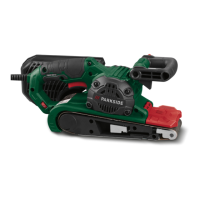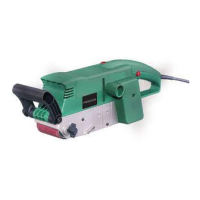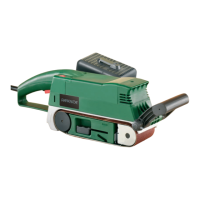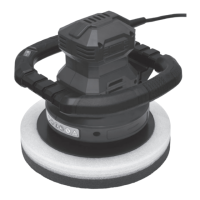■ 8
│
GB
│
IE
PBSD900A2
Selecting speed and abrasive belt
You can use the belt speed adjusting wheel to
adjust the speed, even while the appliance is
running. The optimum belt speed is dependent on
the workpiece or material being processed. We
recommend carrying out a practice run to deter-
mine the correct speed. In the table below, you will
find some recommended values which will help you
determine which belt and speed to use for which
job.
Material/
working area
Softwood
Rough sanding
(grain size)
60
Finishing (grain size) 240
Speed preselection high (5–6)
Material/
working area
Hardwood
Rough sanding
(grain size)
60
Finishing (grain size) 180
Speed preselection high (5–6)
Material/
working area
Chipboard
Rough sanding
(grain size)
60
Finishing (grain size) 150
Speed preselection high (5–6)
Material/
working area
Removing
paint/varnish
Rough sanding
(grain size)
60
Finishing (grain size) ––
Speed preselection high (5–6)
Material/
working area
Rubbing down
paintwork/varnish
Rough sanding
(grain size)
150
Finishing (grain size) 320
Speed preselection low (1–2)
Material/
working area
Removing
rust from steel
Rough sanding
(grain size)
40
Finishing (grain size) 120
Speed preselection medium/high (3–4)
Material/
working area
Plastics
Rough sanding
(grain size)
120
Finishing (grain size) 240
Speed preselection low/medium (2–3)
Material/
working area
Non-ferrous metals
(e.g. aluminium)
Rough sanding
(grain size)
80
Finishing (grain size) 150
Speed preselection medium/high (3–4)
Stationary work
♦ Turn the additional handle to the horizontal
position.
♦ Turn the power tool as shown in the illustration
and place it on a stable worktop.
♦ Fit the two screw clamps
in the recesses
provided and clamp the power tool tightly.

